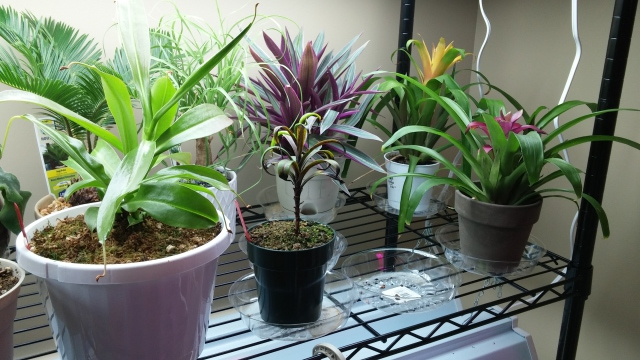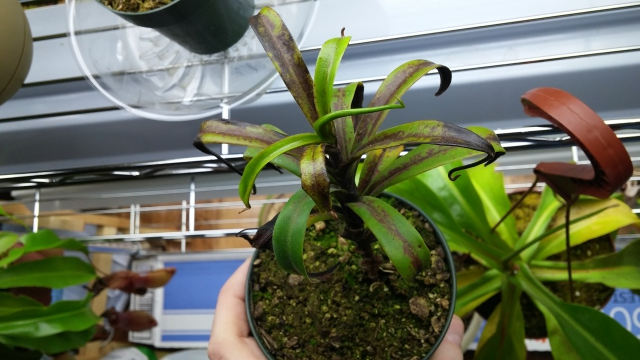Question
 N. glabrata
N. glabrata  New Green
New Green
Hi Jeff and Jacob,
I purchased a N. glabrata from you some months ago, and it has, over some time, started discoloring. Leaves are blotchy, brown and yellowing. I thought perhaps, since this guy is a highlander, I am keeping it too warm at night, so have started decreasing it's temperature to around 55F, or thereabouts, at night. While it has been browning, it has still been growing, just not very pretty. Since reducing nighttime temps, I've noticed that the newest growth is now a brilliant green. As a side note, I've also treated the soil with trichoderma and have fertilized it twice in the last month and a half with 1/4 strength orchid (urea free) fertilizer.
Do you think my assumption is correct, could it have been warm nighttime temps causing the discoloration??? Hoping that was it, and I'll be watching it carefully... It does, however, appear to be improving. Really wondering if they are that touchy in your experience.
I've attached a photo of both, it's set up and a close-up of the leaves. It receives 12 hours of light (6500k), temps are around 85F daytime, 55F night time. It was around 75F night time before. Soil is the mix you shipped it in, sphagnum/perlite. Water is DI water, 0 ppm. Note the new growth is a nice bright green.
Regards,
Jeff
AnswerThe leaf discoloration definitely looks like exposure to wrong temperatures, either too cold or too hot. Since the new growth looks better after bringing down the night temperature to 55癋, I will assume the discoloration is from excessively warm conditions. Nepenthes glabrata is a true highland plant. It requires a 15?20?drop in temperature at night, preferably below 60? but definitely below 70? If the night temperature is too warm, the plant will not be able to produce enough energy during the day to keep up with metabolism at night. In short, the plant will eventually die from exhaustion. Highland plants need cool nights to reduce nighttime metabolism. The discoloration is evidence of cells dying off because of exhaustion.
(The same is true for a lowland plant being exposed to cold temperatures. If the temperature is too cold at night, its metabolism slows down too much, and the plant begins to shut down cells. Hence, discoloration.)
You've already corrected the problem, so it's not necessary to do anything further. However, you may want to cease using Trichoderma with your Nepethes. Nepenthes are not prone to root fungal diseases as other types of plants. As long as you top water frequently and allow the water to drain through, your plant will be fine.
Good growing!
Jacob Farin







